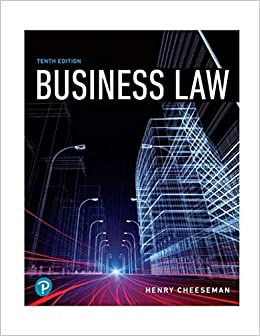Need help with solutions. The attached quiz is due this sunday at 10am
UMUC - ACCT 220 6981 Principles of Accounting I (2158) Quiz 2 Due by Sunday, October 11, 2015 (11:59 pm EST) Name: Date: This quiz consists of 3 multiple choice questions and 4 problems. All parts must be completed. Instructions: - Complete this quiz in one sitting. YOU MUST SHOW ALL WORK FOR THE PROBLEMS!! This quiz is to be completed without the assistance of any other person. You may use only the resources provided by your instructor for this class. You may create an Excel and / or Word File for your work. Please verify that each page prints out formatted with your name and page number on the page. - Save your work (include your name in the filename) and upload for grading. - You may only submit this quiz once. I pledge on my honor that I have not given or received any unauthorized assistance on this examination. In addition, I pledge that I will not disclose to, or discuss the contents of this examination with, students who have not taken it. ___________________________________________________________________ Signed Page 1 of 5 UMUC - ACCT 220 6981 Principles of Accounting I (2158) Quiz 2 Multiple Choice (7 points each) 1. DeVries uses an allowance method for recording bad debts. DeVries determined that $1,000 of accounts receivable from Morris Corporation are uncollectible. The entry DeVries should make to write off the Morris account would include: A. B. C. D. E. a credit to Cash for $1,000. a credit to Allowance for Uncollectible Accounts for $1,000. a credit to Accounts Receivable for $1,000. a credit to Uncollectible Accounts Expense for $1,000. None of these. 2. Inventory accounts are classified in which section of the balance sheet? A. B. C. D. E. Current assets. Investments. Property, plant, and equipment. Intangible assets. None of these. 3. Inventory Item A has a cost of $2,000. The replacement cost is $1,800. The item can be sold for $2,500 to a customer, and the normal profit margin is $1,000. Using the lower-of-cost-or-market rule, at what amount should this item be reported in inventory on the balance sheet? A. B. C. D. $1,800 $2,000 $2,500 $1,000 Page 2 of 5 UMUC - ACCT 220 6981 Principles of Accounting I (2158) Quiz 2 Problem #1 (16 points) Annual sales were $1,600,000, and the January 1 Allowance for Uncollectibles had a credit balance of $25,000. $18,600 of accounts were written off during the year. The provision for uncollectible accounts is based on % of sales. Using the percentage of sales technique and a 2% rate, complete the following: Required 1. Prepare the entry to record the accounts written off during the year. 2. Prepare the entry to record the provision for uncollectibles. Problem #2 (17 points) Hall uses aging to estimate uncollectible accounts. The following table reveals the likelihood of collection: Age 0 to 30 Days 31 to 60 Days 61 to 120 Days Over 120 Days Probability of Collection 98% 90% 50% 10% Amount Outstanding $100,000 $50,000 $25,000 $10,000 Accounts of $100,000 are less than 30 days old (98% collectible), $50,000 are 30 to 60 days old (90% collectible), $25,000 are 61-120 days old (50% collectible), and the remaining $10,000 is 10% collectible. Required 1. Prepare the journal entry to update the allowance for uncollectibles, assuming the balance prior to aging was a $10,000 debit. 2. Prepare the journal entry to update the allowance for uncollectibles, assuming the balance prior to aging was a $1,000 credit. Page 3 of 5 UMUC - ACCT 220 6981 Principles of Accounting I (2158) Quiz 2 Problem #3 (30 points) Alta had beginning inventory of 100 units at $10 each. The purchase price increased steadily during the period. Purchases during the period were 200 at $11 each, 300 at $13 each, and 150 at $15 each. Sales were 500 units at $20. Using periodic FIFO: Required: 1. Using periodic FIFO: a. Determine the cost of the ending inventory b. Determine the cost of the goods sold c. Determine the Gross profit 2. Using periodic LIFO: a. Determine the cost of the ending inventory b. Determine the cost of the goods sold c. Determine the Gross profit 3. Using periodic weighted average: a. Determine the cost of the ending inventory b. Determine the cost of the goods sold c. Determine the Gross profit Page 4 of 5 UMUC - ACCT 220 6981 Principles of Accounting I (2158) Quiz 2 Problem #4 (16 points) A company's records show the following: Ending balance per bank statement $ 22,484 Add: Deposits in transit 1,776 Deduct: Outstanding checks #12221 ( 4,717) Correct cash balance $ 19,543 Ending balance per company records $ 14,344 Add: Note receivable collection Interest earnings $ 5,450.00 106.00 5,556 Deduct: NSF Checks (customer collections on account) Service charges 322.00 35.00 Correct cash balance (357.00) $19,543 Required Prepare the entry to record the adjustments necessitated by the bank reconciliation. Page 5 of 5







